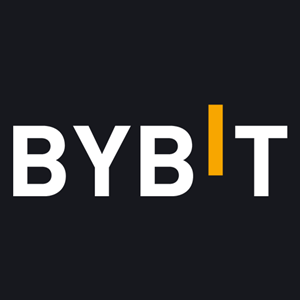Stablecoins in 2025: The Future of Digital Payments November, 2025
Stablecoins have evolved into a crucial part of the digital economy, enabling fast, stable, and low-cost payments worldwide. In 2025, they’re transforming retail, remittances, and global finance through real-world use cases and strategic integration with major platforms.
 Written by Nikolas Sargeant
Written by Nikolas Sargeant
| 手数料 | 入金方法 | |||||||||
|---|---|---|---|---|---|---|---|---|---|---|
| 名前 | 仮想通貨 | テイカー | メーカー | 出金 | 電信送金 | クレジット | Trading API | アクティブ開始日 | Offer | |

Bybit
Contract Trading Exchanges
|
188 | 0.06% | 0.01% | 0.0005 | 2018 |
最大600ドルの特典をGET
|
訪問 | |||

PrimeXBT
Contract Trading Exchanges
|
34 | 0.01% | 0.02% | 0.0005 | 2018 |
GET 35% DEPOSIT BONUS
|
訪問 | |||

Gate.io
Centralized Exchanges
|
512 | 0.20% | 0.20% | 0.0005 | 2017 |
GET A $100 WELCOME BONUS
|
訪問 | |||

Coinbase
Centralized Exchanges
|
136 | 2.00% | 2.00% | 0.000079 | 2012 |
GET USD 5 SIGN-UP BONUS!
|
訪問 | |||

Zoomex
Centralized Exchanges
|
9 | 0.60% | 0.20% | 10 USD | 2021 |
KYC-FREE, $45,115 AVAILABLE IN REWARDS & 20% FEES OFF
|
||||
Stablecoins have become a cornerstone of the digital economy, offering a bridge between the volatility of cryptocurrencies and the stability of traditional fiat currencies. These digital assets are designed to maintain a consistent value, typically pegged to a reserve asset like the U.S. dollar, making them an attractive option for both investors and everyday users seeking stability in the crypto space.
Over the past decade, stablecoins have evolved from niche instruments to integral components of the financial ecosystem. Initially serving as tools for traders to hedge against market volatility, their use cases have expanded significantly. Today, stablecoins facilitate a wide range of financial activities, including remittances, decentralized finance (DeFi) applications, and cross-border transactions. Their ability to provide fast, low-cost, and secure transactions has contributed to their growing adoption worldwide.

In 2025, the significance of stablecoins in the global financial landscape is more pronounced than ever. With a total market capitalization exceeding $240 billion, they have become essential tools for financial inclusion, especially in regions with unstable local currencies or limited access to traditional banking services. Moreover, collaborations between stablecoin issuers and established financial institutions are paving the way for broader integration into the mainstream economy, signaling a future where digital currencies play a pivotal role in everyday financial transactions.
The Current State of Stablecoins
Market Overview
As of 2025, the stablecoin market has witnessed substantial growth, with a total market capitalization surpassing $240 billion. Leading the market are Tether (USDT) and USD Coin (USDC), commanding significant shares due to their widespread adoption and trust among users. PayPal's entry into the stablecoin arena with PYUSD has also garnered attention, aiming to leverage its extensive user base to promote digital currency usage in everyday transactions.
Adoption in Emerging Markets
Stablecoins have found a particularly receptive audience in emerging markets, where economic instability and limited access to traditional banking services are prevalent. In countries experiencing high inflation or currency devaluation, stablecoins offer a reliable store of value and a means to engage in international commerce. For instance, in parts of Latin America and Africa, individuals and businesses are increasingly turning to stablecoins for remittances and cross-border trade, benefiting from lower fees and faster transaction times compared to conventional financial systems.

Integration with Traditional Finance
The integration of stablecoins into traditional financial systems has accelerated, with numerous partnerships forming between crypto platforms and established financial institutions. Exchanges like Bybit, PrimeXBT, Gate.io, Zoomex, and Coinbase have been at the forefront of this movement, offering users seamless access to stablecoin trading and services. These collaborations are not only enhancing the utility of stablecoins but also fostering greater trust and adoption among users who are more familiar with traditional financial platforms.
Moreover, initiatives like Visa's partnership with stablecoin infrastructure providers are enabling the use of stablecoins for everyday purchases, bridging the gap between digital currencies and real-world applications. Such developments underscore the growing acceptance of stablecoins as viable alternatives to traditional payment methods, signaling a shift towards a more inclusive and efficient financial ecosystem.
Practical Use Case in Everyday Transactions
Stablecoins have evolved beyond speculative trading tools to become integral in everyday financial transactions. Here's an in-depth look at their practical applications in 2025, supported by real-world examples.
Retail Payments
Stablecoins are increasingly used for daily purchases, offering a stable and efficient alternative to traditional currencies. In Latin America, Visa has partnered with Bridge to launch stablecoin-linked Visa cards, enabling customers in countries like Argentina, Colombia, and Mexico to make everyday purchases using cryptocurrency. These cards convert stablecoin balances into local currencies at the point of sale, allowing seamless transactions at any merchant that accepts Visa.
Similarly, Mastercard has unveiled capabilities to power stablecoin transactions from digital wallets to checkouts. Their Multi-Token Network (MTN) facilitates real-time payments and redemptions, enabling partners like Ondo Finance to leverage on-chain tokenized assets for efficient commerce applications.

Remittances
Cross-border money transfers have traditionally been plagued by high fees and slow processing times. Stablecoins offer a solution by enabling near-instantaneous transfers with minimal fees. For example, Félix, a chat-based platform serving over 60 million Latinos in the U.S., has integrated Zero Hash’s stablecoin technology to provide 24/7 instant money transfers. This integration has reduced friction for users, lowered transfer costs, and opened up compliant access across 52 U.S. jurisdictions.
In the Philippines, UBX has introduced a Philippine Peso stablecoin on the Polygon network to enhance remittance services. This initiative aims to provide faster and more affordable cross-border payments, particularly benefiting overseas Filipino workers and their families.
Subscription Services and Online Commerce
The e-commerce sector is increasingly adopting stablecoins for transactions. Platforms like Stripe have enabled merchants to accept stablecoin payments for online transactions, expanding the reach of digital currencies in the retail space.
Shopify, a leading e-commerce platform, has integrated crypto payments, allowing merchants to accept digital transactions from customers worldwide via global payment gateways. This integration facilitates the use of stablecoins in online commerce, providing a stable and efficient payment method for both merchants and consumers.
Case Studies
- RedotPay: RedotPay has launched a crypto card that allows users to spend stablecoins like USDT and USDC worldwide. This card is accepted in over 158 countries, enabling users to make purchases and withdraw cash from ATMs, effectively bridging the gap between digital currencies and traditional financial systems.
- Tether's Expansion: Tether, the issuer of USDT, is expanding into the U.S. payments market by developing a stablecoin-enabled point-of-sale system. This system aims to rival existing payment solutions like Square, allowing merchants to accept stablecoin payments directly, thereby increasing the utility of stablecoins in everyday transactions.
These examples illustrate the growing adoption of stablecoins in various sectors, highlighting their potential to revolutionize traditional financial systems by offering faster, more efficient, and cost-effective transaction methods.
Technological Advancements and Innovations
In 2025, stablecoins are at the forefront of financial innovation, driven by significant technological advancements and strategic collaborations.
Integration with Payment Networks
Major payment networks are actively integrating stablecoins into their systems:
- Visa and Bridge Partnership: Visa has partnered with stablecoin infrastructure provider Bridge to launch stablecoin-linked Visa cards. This initiative enables customers in Latin America to make everyday purchases with cryptocurrency, converting stablecoin balances into local currencies at the point of sale.
- Mastercard's End-to-End Capabilities: Mastercard has unveiled comprehensive capabilities to power stablecoin transactions from wallets to checkouts. Collaborations with digital asset platforms and fintech companies aim to integrate stablecoins more directly into everyday payment flows.
Development of Stablecoin Wallets and Apps
User-friendly stablecoin wallets and applications are enhancing accessibility and adoption:
- Coinbase Wallet: Coinbase Wallet offers an intuitive interface for managing stablecoins, supporting features like swapping and staking. Users can earn rewards by holding USDC on-chain, providing an incentive for stablecoin adoption.
- Gem Wallet: Gem Wallet provides a secure environment for stablecoin transactions, catering to both novice and experienced users. It supports multiple stablecoins and offers features like sending, receiving, and exchanging digital assets.
Smart Contracts and Programmable Money
Stablecoins are increasingly utilized in smart contracts, enabling automated financial operations:
- UAE's Programmable Money Initiatives: In the UAE, stablecoins are being used in programmable money applications, such as automating rent payments and business contracts. This integration facilitates real-time, condition-based transactions, enhancing efficiency and transparency in financial processes.
- Smart Contract Automation: Smart contracts can be programmed to auto-trigger cash token payouts for various financial activities, including insurance claims, utility bill payments, and corporate actions. This automation reduces the need for intermediaries and minimizes the potential for human error.

Regulatory Landscape
United States
In 2025, the U.S. is advancing two major legislative efforts to regulate stablecoins:
- STABLE Act: This act aims to establish a federal regulatory framework for stablecoins, focusing on transparency and accountability. It proposes requirements for stablecoin issuers to maintain adequate reserves and undergo regular audits.
- GENIUS Act: The Guiding and Establishing National Innovation for U.S. Stablecoins (GENIUS) Act seeks to provide regulatory clarity for payment stablecoins. It mandates that issuers maintain a 1:1 reserve ratio with U.S. dollars or other approved high-quality liquid assets. The act also requires issuers to comply with anti-money laundering (AML) and sanctions regulations, undergo regular audits, and maintain the technical ability to freeze and burn tokens to comply with lawful orders.
These legislative efforts reflect a bipartisan consensus on the need for a clear regulatory framework to ensure consumer protection and financial stability while fostering innovation in the digital asset space.

European Union
The EU's Markets in Crypto-Assets (MiCA) regulation, which came into force in December 2024, provides a comprehensive framework for crypto-assets, including stablecoins. Key provisions include:
- Authorization Requirements: Stablecoin issuers must obtain authorization and are subject to strict liquidity and reserve requirements.
- Reserve Requirements: Fiat-based stablecoins must maintain a 1:1 reserve ratio in liquid assets to ensure financial stability.
- Compliance Deadlines: Stablecoin issuers are required to comply with MiCA regulations by mid-2026. Non-compliant stablecoins may face restrictions or removal from EU markets.
These measures aim to enhance consumer protection, ensure financial stability, and foster innovation within the EU's digital finance sector.
United Kingdom
The UK is developing its regulatory framework for stablecoins, focusing on integrating them into the existing financial system while promoting innovation. Recent developments include:
- Draft Legislation: The UK government has published draft legislation to regulate cryptoasset trading exchanges and stablecoin issuance. The proposed rules aim to enhance transparency, consumer protection, and operational resilience.
- Exemption for Overseas Issuers: The UK plans to exempt overseas stablecoin issuers from its upcoming cryptocurrency regulations, aiming to bolster investor confidence and establish Britain as a fintech hub.
These initiatives reflect the UK's commitment to becoming a global leader in fintech and digital finance.
Global Perspectives
Globally, countries are adopting varied approaches to stablecoin regulation:
- Singapore: The Monetary Authority of Singapore has finalized its stablecoin regulatory framework, covering single-currency stablecoins pegged to the Singapore dollar or G10 currencies. The framework allows both banks and non-banks to issue stablecoins, provided they meet stringent reserve and disclosure requirements.
- Other Jurisdictions: Countries like Japan, Hong Kong, and the UAE are also developing regulatory frameworks to oversee stablecoin issuance and usage, focusing on consumer protection and financial stability.
These global efforts underscore the importance of international cooperation in establishing consistent and effective regulatory standards for stablecoins.

Challenges and Risks
Despite the growing adoption of stablecoins in 2025, several challenges and risks could impact their stability and integration into the global financial system.
Regulatory Uncertainty
The absence of a unified global regulatory framework for stablecoins creates inconsistencies that hinder widespread adoption. In the United States, while legislative efforts like the STABLE Act and the GENIUS Act aim to establish clear guidelines, debates continue over the extent of federal oversight and the role of state regulations. This patchwork approach can lead to compliance challenges for issuers and user confusion. Similarly, other jurisdictions are developing their own regulatory approaches, leading to a fragmented global landscape.
Security Concerns
Stablecoins are not immune to cybersecurity threats. In 2025, cybercriminals have become more sophisticated, exploiting vulnerabilities in smart contracts, private keys, and user interfaces. High-profile incidents, such as the $1.5 billion theft from the ByBit exchange, highlight the potential for significant financial losses due to hacking and fraud. These security breaches undermine user confidence and emphasize the need for robust security measures and regular audits.

Market Volatility
While stablecoins are designed to maintain a stable value, they can still experience volatility due to market dynamics. Factors such as insufficient reserves, lack of transparency, and sudden shifts in demand can lead to depegging events. For instance, algorithmic stablecoins have faced challenges in maintaining their peg during market downturns, leading to significant losses for holders. Ensuring adequate liquidity and transparent reserve management is crucial to maintaining stability.
Competition with Central Bank Digital Currencies (CBDCs)
The rise of CBDCs presents both opportunities and challenges for stablecoins. While CBDCs offer the backing and trust of central banks, they may compete directly with private stablecoins in the digital payments space. Some governments are exploring CBDCs to enhance financial inclusion and modernize payment systems, potentially reducing the demand for privately issued stablecoins. The coexistence of CBDCs and stablecoins will depend on regulatory decisions, technological interoperability, and user preferences.
Future Outlook
The stablecoin market is poised for significant expansion. Analysts predict that the market capitalization could reach $400 billion by the end of 2025, driven by increased adoption and regulatory clarity.
Key factors contributing to this growth include:
- Integration with Traditional Finance: Major financial institutions are exploring stablecoin solutions for cross-border payments and liquidity management.
- Emergence of New Stablecoins: Companies like Fidelity are launching their own stablecoins, indicating growing institutional interest.

Potential for Financial Inclusion
Stablecoins offer a promising avenue for enhancing financial inclusion, particularly in regions with limited access to traditional banking services. By providing a stable digital currency accessible via smartphones, stablecoins can empower unbanked and underbanked populations.
Examples include:
- USDC Initiatives: Circle's USDC has been utilized to provide financial services to underserved communities, offering low-cost, near-instant transactions.
- Emerging Markets Adoption: In countries facing currency instability, stablecoins serve as a reliable store of value and medium of exchange.
Innovation in Financial Products
The stablecoin ecosystem is witnessing the development of innovative financial products:
- Yield-Generating Stablecoins: Some platforms offer interest-bearing stablecoins, providing users with passive income opportunities.
- Programmable Money: Integration with smart contracts enables automated financial operations, such as conditional payments and decentralized finance (DeFi) applications.
- Tokenized Assets: Stablecoins facilitate the tokenization of real-world assets, enhancing liquidity and accessibility.

Long-Term Viability
The sustainability of stablecoins depends on several factors:
- Regulatory Frameworks: Clear and consistent regulations are essential to ensure stability and consumer protection.
- Technological Advancements: Continued innovation in blockchain technology will enhance scalability and security.
- Competition with CBDCs: The rise of central bank digital currencies may influence the role and adoption of private stablecoins.
Overall, stablecoins are expected to play a significant role in the future financial ecosystem, complementing traditional currencies and digital assets.
Conclusion
Stablecoins have emerged as a pivotal component of the digital economy, offering stability, efficiency, and inclusivity. Their applications span from facilitating everyday transactions to enabling access to financial services in underserved regions.
Final Thoughts
As the financial landscape continues to evolve, stablecoins are positioned to bridge the gap between traditional finance and the digital future. With ongoing innovation and supportive regulatory developments, they hold the potential to transform global payment systems and promote greater financial inclusion.
| 手数料 | 入金方法 | |||||||||
|---|---|---|---|---|---|---|---|---|---|---|
| 名前 | 仮想通貨 | テイカー | メーカー | 出金 | 電信送金 | クレジット | Trading API | アクティブ開始日 | Offer | |

Bybit
Contract Trading Exchanges
|
188 | 0.06% | 0.01% | 0.0005 | 2018 |
最大600ドルの特典をGET
|
訪問 | |||

PrimeXBT
Contract Trading Exchanges
|
34 | 0.01% | 0.02% | 0.0005 | 2018 |
GET 35% DEPOSIT BONUS
|
訪問 | |||

Gate.io
Centralized Exchanges
|
512 | 0.20% | 0.20% | 0.0005 | 2017 |
GET A $100 WELCOME BONUS
|
訪問 | |||

Coinbase
Centralized Exchanges
|
136 | 2.00% | 2.00% | 0.000079 | 2012 |
GET USD 5 SIGN-UP BONUS!
|
訪問 | |||

Zoomex
Centralized Exchanges
|
9 | 0.60% | 0.20% | 10 USD | 2021 |
KYC-FREE, $45,115 AVAILABLE IN REWARDS & 20% FEES OFF
|
||||


